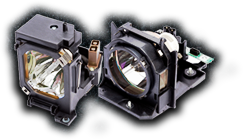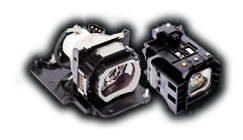Has the zombie movie craze reached its peak? Think about it: Until the early 2000s, zombie flicks were specialty movies, a small horror sub-genre hidden in the back corner of Blockbuster.
Now, they’re everywhere. This isn’t a sub-genre anymore, and there’s plenty of evidence that we’re reaching a zombie-movie fever pitch. The latest season premiere of The Walking Dead drew in more than 10 million viewers, and Barnes and Noble recently called the last decade “the golden age of zombie fiction.”
How did we get here? What was the zombie movie that set the trend in motion? There’s one that many cite: Danny Boyle’s “28 Days Later.” Now nearly a decade later, Boyle’s end-of-days thriller serves as one of the best examples in this now-gigantic genre.
We know how the story starts. An extremely contagious, rapidly-spreading virus escapes from the lab and devastates the general population. Panic ensues. Society as we know it is forever lost. And that’s how 28 Days Later begins. In the movie, the virus is different; it’s called Rage and causes humans to act violently and eat people. Panic ensures. Society is forever lost.
You get the idea.
That’s the world Jim – played by a then-unknown Cillian Murphy – wakes up to 28 days after the outbreak. (Murphy’s career took off after this movie; you might know him as “Scarecrow” from the Batman trilogy.) Jim soon discovers that England is abandoned and only inhabited by night-walking, Rage-infected humans. He begins wandering an eerily silent, abandoned London. These early scenes alone capture the gloom, doom and isolation beautifully.
Eventually, Jim teams up with Selena (Naomie Harris) and a father and daughter team played by Christopher Ecceleston and Megan Burns. And they make a break from zombie-infested London to Manchester, where they hoping to find a survivors’ camp. They have to fight off the attacks, they don’t know who to trust, they’re scared, etc.
You get the idea.
What makes 28 Days Later work so well is that it subverts the genre it helped catapult into mega-popularity. The story flows rapidly, albeit with a few tried-and-true clichés. It’s an edge-of-your-seat thriller, but the drama still works and you care if the characters make it out of end of the world alive. And the cinematography is effective and captivating, especially when I watched it on my Panasonic PT-DW6300 projector. It captivates you and keeps you guessing.
Today, that plot might sound familiar. We’ve seen zombies and post-apocalyptic thrillers done in so many ways now – from special-effects spectacles like World War Z to laugh-out-loud spoofs like ZombieLand. 28 Days Later reminds us how little the genre has changed in the last decade. It starts with a virus, and destruction, and the end of humanity. You get the idea. But still, when done right, it’s fun to watch.
Category Archives: reviews
Film Review: Drive
Good evening, Joe again, for MyProjectorLamps.com and here is my review of Nicolas Winding Refn’s “Drive” – Here’s my setup of the second home theater in my house.
Home Theater Setup:
Screen: Da-Lite 120”
Projector: Sharp PGF267X-L
Blu-Ray Player: Toshiba BDX1400
Receiver: Marantz NR1603
Speakers: NHT Absolute 5.1 Surround System
Ryan Gosling does his best James Dean in Nicolas Winding Refn’s “Drive” – only this isn’t a little ditty ‘bout Jack and Diane. This is a neo-noir action thriller in what feels like a true break-out role for Gosling (because All Good Things wasn’t far enough outside his normal typecast).
Drive is one of those films that needs very few words exchanged from the main character to understand them. This is where I think Gosling pulls off being a brooding stuntman credited as simply ‘Driver’, who moonlights as a getaway driver for high end robberies. The directorial styles of Refn vary from Michael Mann (Heat), to John Woo (Hard Boiled), to Peter Yates (Bullitt) so the avid fans of gritty filmmaking are in for a real treat. Your average moviegoer might just think it’s just some strange 80’s timepiece set with modern cars and fashion (with exception to Gosling’s satin scorpion jacket, which is oddly nostalgic and became a cult Halloween costume).
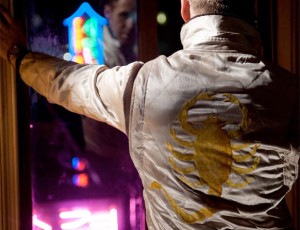
We get to see Bryan Cranston, fresh from season four as Walter ‘Heisenberg’ White in the smash TV hit, Breaking Bad. He plays Driver’s mentor and handler of sorts who through his own dealings owes mobsters some long dough. The mobsters are played by Ron Perlman (Sons of Anarchy, Hellboy) and Albert Brooks (The Simpsons, Finding Nemo) steals the show as a menacing villain, which is something I never thought we’d get to see. There’s a love interest between Driver and his neighbor Irene (Carey Mulligan), who is raising her daughter alone since her beau is in prison. When her boyfriend gets out of prison, he owes someone on the inside for protection he received while incarcerated. Driver decides to help because it is his only way of showing affection. Things go South during what should be a well-planned, routine holdup at a pawn shop. Now Driver has to use his cunning and expert driving skills to survive.
Somehow the otherwise dazzling Christina Hendricks (Mad Men) was frumpy and trashy in this film and it works! There is a shotgun blast reminiscent of Willem Dafoe’s in Wild at Heart, so prepare yourself for this scene, if cautious. The chase scenes are extraordinary as we’re taken to some of the lesser-seen areas of Los Angeles – at maximum speed. Ronin (1998) is the only film that comes close to the octane action thrills of “Drive”. I would sum the action part of the movie as a hybrid between Cobra (1986), starring Sylvester Stallone, and Ronin (1998) starring Robert DeNiro. I think what separates this film from them is the score/soundtrack. Kavinsky’s ‘Nightcall’ in the opening credits and then other modern renditions of 80’s synth pop from College, the Chromatics, and others.
This film was nominated and won several prestigious awards for Refn (as director) and Brooks (as supporting actor) and when you watch you can see why. In film school I learned about how to try to get emotional charges from the actors in their facial expressions and mannerisms instead of telling us how they feel. I had yet to see this done properly since Jim Jarmusch’s “Dead Man” (1995) and this one tops it. Co-star Carey Mulligan said of filming, “staring longingly at Ryan Gosling for hours each day”, which may be the easiest money she’s ever made. Check out this film if you’re into gritty crime thrillers with chase scenes that rival some of the best on film. Once again, thanks for reading and please share if you liked it.
Film Review: Lost Highway
Good evening, I’m Joe and this is my review of David Lynch’s “Lost Highway” – but first – I’m an A/V nerd so let me give you the rundown of my home theater setup.
Screen: Elite Spectrum2 125”
Projector: InFocus IN3128HD
Blu-Ray Player: Pioneer Elite BDP-33FD
Receiver(s): Nakamichi AV-8 Main Receiver, Carver AV-806X Preamp
Speakers:
• Center: Velodyne CHT-FRSGV
• Front: JBL Northridge Series N38
• Rear: Polk Audio – FXi A4
• Subwoofer(s): Velodyne VLF 810 (2)
David Lynch, an American enigma, and his films are even more of a conundrum than he is. In 1997’s “Lost Highway” he continues his usual modus operandi which takes us into the unknown and blurs the lines of reality and dreams. Bill Pullman plays Fred Madison, a saxophonist who is terrorized by a man who enters his house when he’s asleep and videotapes him and his girlfriend Renee (Patricia Arquette) as they sleep.
At a party, he meets a strange mystery man played in ghastly white makeup by Robert Blake, who declares he is behind the videos Madison received. Mystery Man invites Fred to dial his own phone number and to listen as he, who is standing right in front of him, “answers” at the other end of the call.
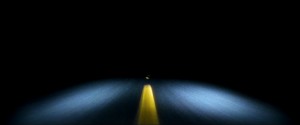
There’s also a grisly murder, a fire, a transformation of physical being – right out of a Kafka novel involving auto mechanic Pete Dayton (played by Balthazar Getty), a gangster’s pornstar arm trophy, also played by Arquette, who convinces Pete to commit a crime, a memory lapse by Getty, a reappearance by Fred Madison and a series of bizarre foreshadowing and precognitive images that add to the mystery of “Lost Highway.”
The film’s end result is a world that is part film noir and part nightmarish delight/classic Lynch, in which you feel as though something is wrong throughout the whole movie but you can’t quite put your finger on it.
Suffice to say, it is a weird movie in that spooky, stomach-turning, deadpan delivery that Lynch’s movies always are and it’s guaranteed to perplex anyone who likes narrative films to be wrapped in tidy resolutions and optimistic fade- outs. The striking visuals, combined with Lynch’s regular composer, Angelo Badalamenti’s music and intense sound design are all frighteningly effective.
“Lost Highway” often feels like an esoteric, intentionally perverse joke that Lynch knew would never make sense to most viewers. It’s also feels, with its similarities to “Twin Peaks: Fire Walk With Me,” “Blue Velvet” and “Wild at Heart,” like familiar, yet treacherous territory. Lynch’s main objective is to shock and arouse us, but in using the same kind of music, camera effects and offbeat editing rhythms over and over his work is beginning to look like variations on a single theme – the nightmares that creep into our realities… or is that the other way around?
Patricia Arquette, whose acting style is perfectly matched to Lynch’s vision, gives the strongest, most memorable performance and is reminiscent of Kim Novak’s similar dual roles in Hitchcock’s “Vertigo.”
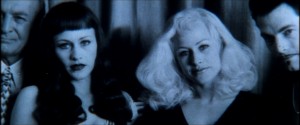
There are also cameo appearances by Richard Pryor, Marylin Manson, Giovanni Ribisi, Gary Busey, Henry Rollins, Mink Stole (of John Waters’ “Pink Flamingoes” fame) and Natasha Gregson Wagner, daughter of the late Natalie Wood. One piece of trivia to note: The pornography mogul Andy was played by Michael Masse – who was Fun Boy in “The Crow”, the one who inadvertently shot and killed Brandon Lee during filming.
Overall, I think this was Lynch’s masterpiece up until the release of Mulholland Drive four years later (another review for another time). This was his last hurrah for reality before plunging even further into the depths of the otherworldly nightmare realms of his next two films. Here we get to see some of the Lynch’s influences from Orson Welles, Alfred Hichcock and co-writer Barry Gifford (also wrote the novel for Lynch’s adaptation of “Wild at Heart”. If you’re looking for a happy ending, you should know better than to expect that from Lynch – this film is no different. I’ve watched this film over 20 times and it stands alone as a true depiction of anguish, desperation and the stark ugliness of horrible how humans can be to one another.
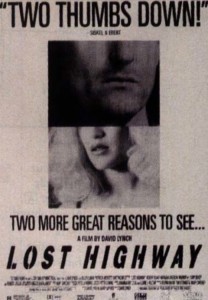
The promotion of the film in US theaters was leveraging a rare event. When both Siskel and Ebert give it two thumbs down – which this one emphatically did, you have definite marketing potential to the large camps of moviegoers who reject the opinions of critics. Thanks for reading, and if you liked it, please share!
